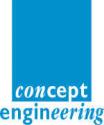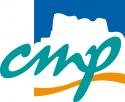1.1 Opening Session: Plenary, Awards Ceremony & Keynote Addresses
Date: Tuesday 15 March 2016
Time: 08:30 - 10:30
Location / Room: Großer Saal
| Time | Label | Presentation Title Authors |
|---|---|---|
| 08:45 | 1.1.2 | PRESENTATION OF DISTINGUISHED AWARDS |
| 09:15 | 1.1.3 | KEYNOTE: FROM THE HAPPY FEW TO THE HAPPY MANY - TOWARDS AN INTUITIVE INTERNET OF THINGS Speaker: Luc Van den hove, IMEC, BE Abstract The last year every high-tech company was talking about the Internet of Things. The coming decade, we will indeed see a rise in smart connected systems. Machines, buildings, vehicles, personal appliances will all be equipped with more intelligence that will be interconnected. Smart systems will be unobtrusive, ultra-small, cheap, intelligent, and ultra-low power. They will include sensors, actuators, and processing and communication abilities, often in a one-chip wireless solution. Imec aims at bringing the Internet of Things to the next level. Imec develops the building blocks to create an easy-to-use Internet of Things that surrounds us, that interacts with us as individuals, that learns our habits, our preferences, our health… An Internet of Things that will connect diverse unconnected systems. That will turn the massive amount of measured data in information to make the right decisions, to take the right actions exactly as we need or want. Of course taking into account our privacy preferences. This Intuitive Internet of Things will help manage the sustainability, complexity and safety of our world. It will increase our comfort and wellbeing. Not only of the happy few. Imec will bring the Intuitive Internet of Things to the happy many. |
| 08:30 | 1.1.1 | WELCOME ADDRESSES Speakers: Luca Fanucci1 and Jürgen Teich2 1DATE 2016 General Chair, University of Pisa, IT; 2DATE 2016 Programme Chair, Friedrich-Alexander-Universität Erlangen-Nürnberg, DE |
| 1.1.4 | KEYNOTE: DESIGN WILL MAKE EVERYTHING DIFFERENT Speaker: Antun Domic, Synopsys, US Abstract How many different silicon manufacturing process technologies will there be at 10, 7, or 5 nanometers? Probably only three. How many design starts will there be at 10, 7, or 5 nanometers? According to IBS [1], in 2025 there will be less than 250 design starts at 10 nanometers and below, about 3% of the total number of design starts that year, and only about five of those design starts, i.e. 2% of the 3% (0.05% of the total) will take place in Europe. But this is not the end! This is not even the beginning of the end. There is a great deal of opportunity beyond the relentless progression of Moore's law. Design innovation can be the enabler, and the differentiator, regardless of the process technology node. Automotive is a great example: according to Bosch [2], electronics represents 80% of the innovation in cars, and 40% of its cost; the car is a computer - actually, over one hundred computers - on four wheels already, and it will get smarter and smarter, with new layers of services and players just around the corner. Design, and design automation can help increase and accelerate innovation, and at the same time, improve efficiency. The "Internet of Things" is another, potentially greater example: smartness going way beyond the phone. Everything will get smarter: cars, homes, cities, agriculture, farming, factories, etc. Most of the IoT enablement and differentiation will stem from design, and design automation, which include IP, and an increasing amount of software. After performance and power consumption, systems reliability and security have already become critical design considerations at the dawn of a new era, in which design will be critical to make everything better." [1] Design Starts by Geographic Region 2010-2025, International Business Strategies, Inc. (IBS), 2015 [2] "Can EDA Solve the Problems of Electronic Design for the Car of the Future?", Peter van Staa, Robert Bosch, ICCAD 2014 Keynote Address | |
| 10:30 | End of session Coffee Break in Exhibition Area |











